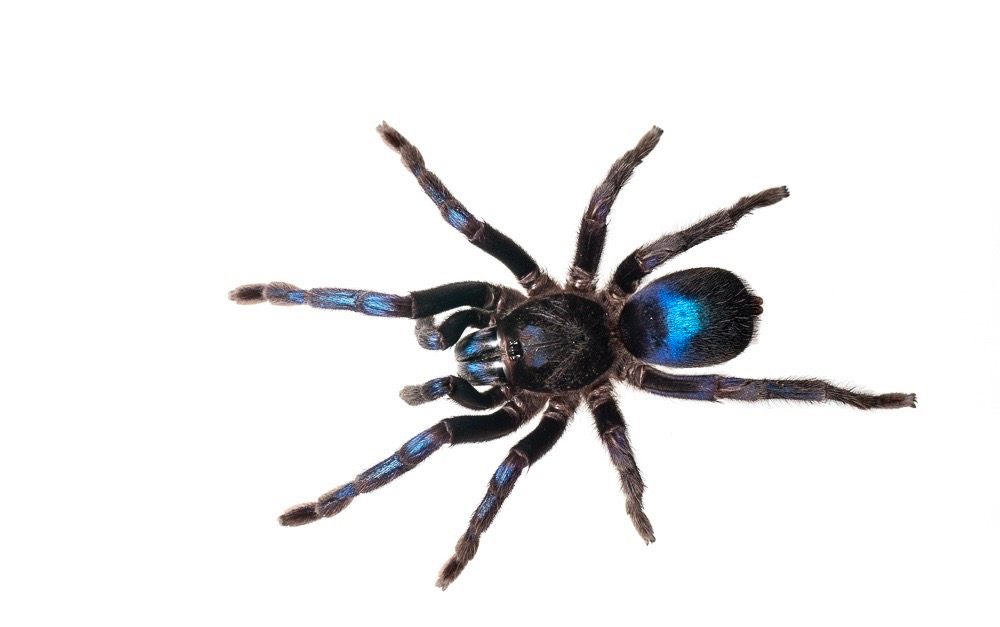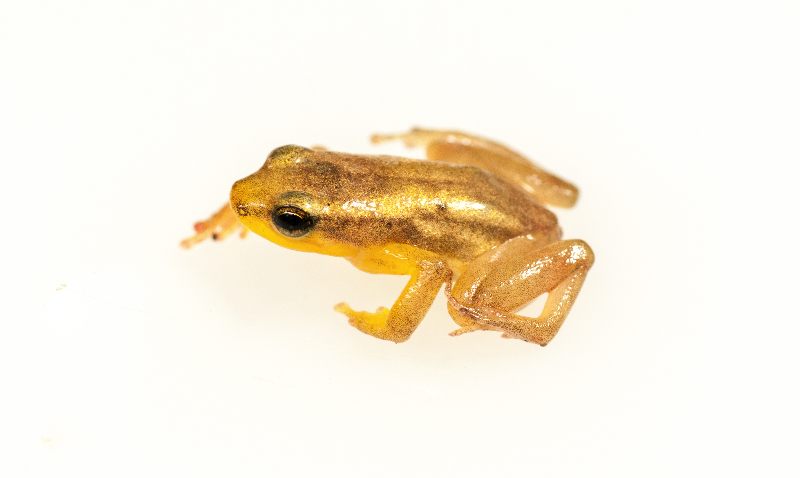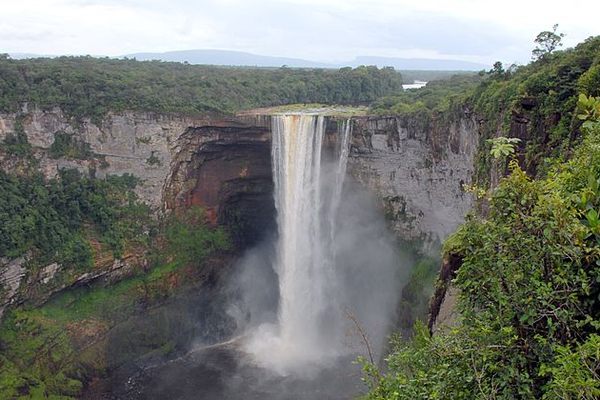Found: An Electric Blue Tarantula and More Than 30 Other New Species
A rich month of species-finding in the Guyana rain forest.

Andrew Snyder was on a night hike along the Potaro River in Guyana’s rain forest when he caught sight of a small glint of brilliant, cobalt blue coming from a small hole in a rotting stump. The herpetologist and wildlife photographer initially dismissed the sighting, he explained in a blog post, but “something made him go back.” Inside, he found a small, electric blue tarantula—probably a new species. “I have spent years conducting surveys in Guyana and have always paid close attention to the tarantula species,” he said. “I immediately knew that this one was unlike any species I have encountered before.”
Upon closer inspection, he found several other bright blue arachnids inhabiting the tree, an uncommon behavior among typically solitary tarantulas. “What did this mean for this species? Were the holes interconnected inside?” Snyder says. “Is this species communal, or did they just tolerate each other?”

The tarantula is just one of the many surprising finds that Snyder and the rest of the Biodiversity Assessment Team, a joint effort by the local chapter of the World Wildlife Fund, the University of Guyana, the country’s Protected Areas Commission, and Global Wildlife Conservation, uncovered in a month-long survey of the Potaro Plateau in central Guyana, on the northern edge of South America.
They discovered more than 30 species that are probably new to science, including six kinds of fish, three plants, 15 aquatic beetles, and five odonates (carnivorous insects such as dragonflies and damselflies). Additional species are perhaps not new, but were observed in the country for the first time.
In Guyana, primary rain forest still covers 75 percent of the land, and it is one of the world’s most important biodiversity hotspots. It hosts a range of rare or endangered species, including birds such as the Tepui swift and Guianan cock of the rock; the white-lipped peccary, a hog-like mammal; and the very flashy golden rocket frog.

As explained by Snyder, the new finds highlight the importance of conservation in the area, including the sometimes overlooked effort to protect invertebrates such as insects. “Though often overlooked and not typically mentioned during conservation conversations,” he said, “invertebrates are vital to the proper maintenance and function of ecosystems and are just as important as charismatic macrofauna.” That tarantula does seem pretty charismatic, though.










Follow us on Twitter to get the latest on the world's hidden wonders.
Like us on Facebook to get the latest on the world's hidden wonders.
Follow us on Twitter Like us on Facebook